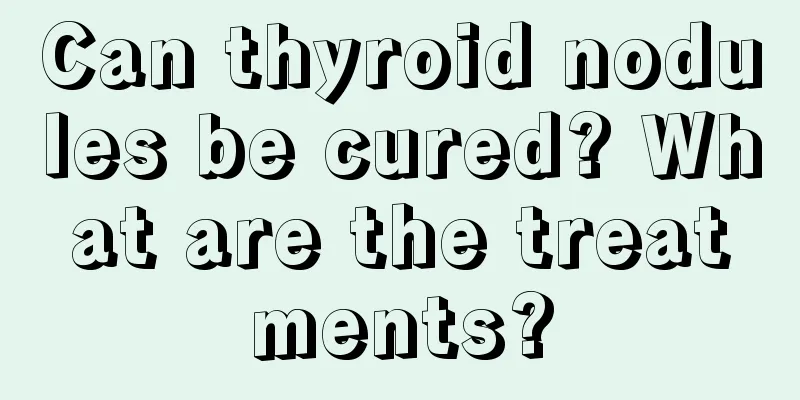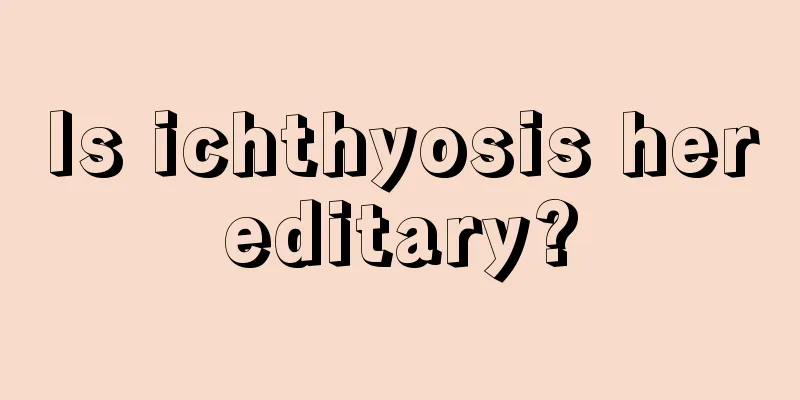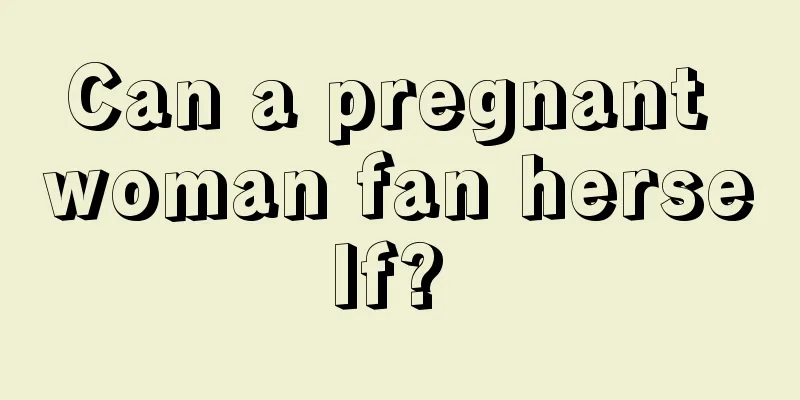Can thyroid nodules be cured? What are the treatments?

|
Thyroid nodules are a common thyroid disease, affecting approximately 4% of adults. The treatment of thyroid nodules is relatively mature, and the treatment methods vary from person to person. Friends who are interested may wish to learn more about it. 1) Thyroid hormone: The usual dosage of dried thyroid preparations is 90-180 mg per day, and the course of treatment is generally 3-6 months. If there is a relapse after stopping the drug, the treatment can be repeated to maintain the basal metabolic rate within the normal range. For young patients in the early stages, levothyroxine (Euthyrox) can be treated with 100 ug per day, and the value can be increased to 150-200 ug per day in the second month. Serum TSH concentration measurement can estimate the degree of thyroid suppression. Older patients or those with long-term multinodular goiter should undergo serum high-sensitivity TSH concentration measurement or TRH stimulation test before receiving levothyroxine treatment to determine whether there is obvious functional autonomy. If the basal TSH is extremely low or undetectable and the TSH response to TRH is low or absent, it indicates functional autonomy and levothyroxine should not be used for suppressive treatment. If functional autonomy can be ruled out, levothyroxine treatment can be used. The initial dose should not exceed 50ug per day, and the dose should be gradually increased until the TSH value reaches the inhibition endpoint. Nodular goiter does not respond as well to levothyroxine as diffuse goiter, but it also has a certain effect in inhibiting its further enlargement. 2) Iodine supplementation: Iodine supplementation should be reasonable for those with simple iodine deficiency. After supplementation, the thyroid gland can be seen to shrink to varying degrees. The available preparations include compound iodine oral solution (Lugol solution), potassium iodide, iodized oil intramuscular injection, etc. It is rarely used nowadays. 3) Treatment with Traditional Chinese Medicine: Phlegm-resolving and hard-hard softening method: Patients with only a thick neck and no special subjective symptoms belong to the syndrome of qi stagnation and phlegm accumulation. Treatment should be based on the method of resolving phlegm and hard-hard softening. Seaweed, kelp, Fritillaria thunbergii, green peel, pumice, and pinellia tuber can be used. In addition, eat appropriate amounts of seafood such as kelp and jellyfish or foods rich in iodine. 4) Indications for surgical treatment: patients with clinical symptoms caused by compression of the trachea, esophagus or recurrent laryngeal nerve; patients with retrosternal goiter; patients with huge goiter affecting their daily life and work; patients with nodular goiter and secondary hyperfunction; patients with suspected malignant transformation of nodular goiter. |
<<: How to clean frosted leather shoes better
>>: What are thyroid nodules and what are the symptoms
Recommend
What to do if your ears hurt?
If you experience ear discharge and pain, you sho...
What to do if you accidentally swallow desiccant
Sometimes, if parents do not take good care of th...
What is the reason for the growth of flesh grains on the body
In the dermatology clinic, people often point to ...
Will arm fibroma turn into cancer? Things to note about arm fibroma
Arm fibroma is a very common tumor disease with a...
What should I do if my leather jacket is wrinkled? Are there any tips to get rid of it?
Compared with other clothing, leather jackets are...
Can foot patches be applied to the belly button?
Foot patches are medicines that are applied to th...
Detailed description of the diagnosis and treatment of hamartoma
Nowadays, there are still many people who basical...
Can stomach cold cause bad breath
As the saying goes, health is the capital of revo...
What are the symptoms of rickets in the chest?
Rickets is a bone disease caused by vitamin defic...
What to pay attention to for uterine cancer
Uterine cancer is one of the most common gynecolo...
How to keep green onions fresh
Scallions are not only an edible vegetable, but a...
What are the taboos of skin cancer
Skin cancer is a common disease in life, but most...
How to generally care for bronchial lung cancer? Eight routine nursing measures for bronchial lung cancer
The care of patients with bronchial lung cancer i...
What should breast cancer patients eat after surgery
Diet therapy is one of the auxiliary treatment me...
How many years can you live without treatment of pituitary tumor
The survival time of untreated pituitary tumors v...









